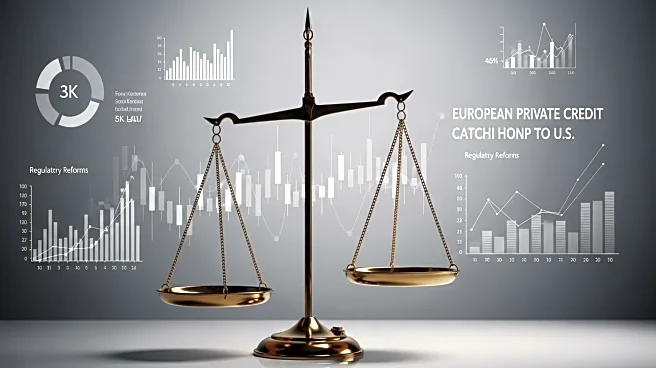What's Happening?
Active European collateralized loan obligation (CLO) exchange-traded funds (ETFs) are gaining traction as strategic instruments in the fragmented credit market. These ETFs combine the structural benefits of CLOs with the liquidity and transparency of ETFs, offering a compelling alternative to traditional fixed-income and private credit vehicles. The European CLO ETF market has shown significant growth, with the launch of the Fair Oaks AAA CLO ETF in November 2024 marking a pivotal moment. These ETFs provide access to investment-grade CLO tranches within a UCITS-compliant structure, democratizing access to alternative credit and enabling both institutional and retail investors to participate in a market previously dominated by sophisticated players.
Why It's Important?
The emergence of active European CLO ETFs is crucial for investors seeking yield, diversification, and strategic flexibility in a volatile credit environment. These ETFs offer daily trading and transparent pricing, addressing liquidity and transparency gaps in the market. The UCITS framework provides regulatory stability, enhancing investor confidence and attracting significant inflows. As global investors face macroeconomic volatility, CLO ETFs offer yield advantages and structural protections, making them an attractive solution for navigating fragmented credit markets. This development is particularly relevant for European insurers, who leverage CLOs for capital efficiency and low duration risk.
What's Next?
As the European CLO ETF market continues to mature, it is poised to play a central role in the global credit market. The ETF model offers a scalable pathway to capitalize on projected growth in CLO issuance, addressing liquidity and transparency challenges that have historically constrained private credit. Innovations such as tokenization may further enhance liquidity and reduce market fragmentation. Investors can expect continued strategic adaptability from active European CLO ETFs, with dynamic tranche selection and risk-adjusted return optimization becoming key strategies in navigating macroeconomic signals and trade policy uncertainties.











